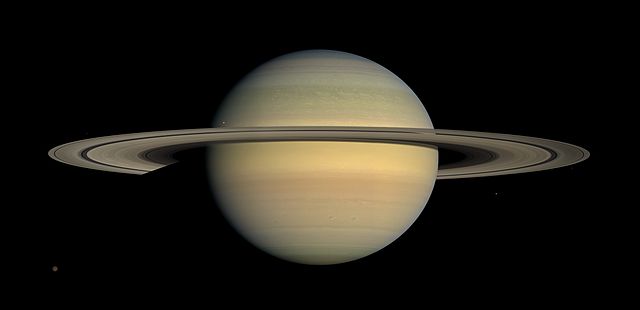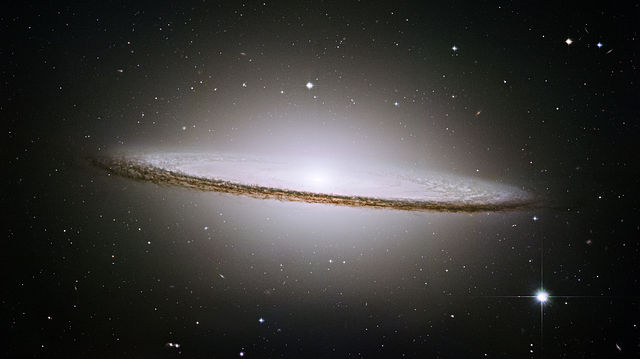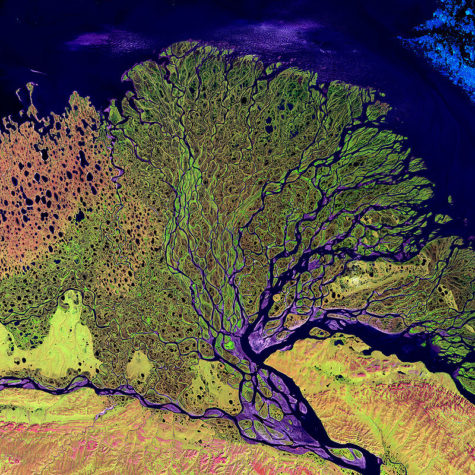A couple of Harvard astronomers just wrote an essay in a new journal called Nature Astronomy. That’s not the most riveting opening sentence you’ve ever read; I apologize.
But the essay was odd, a kind of rumination-with-examples about how things in astronomy on vastly different scales nevertheless have similar structures. That is, electrons orbit atomic nuclei in the same pattern that planets orbit the sun. The astronomers say that aside from such patterns being pretty, finding them might also “unravel fundamental truths that unifies their governing principles.”
I don’t know whether to think that’s confusing (finding a pattern that unravels fundamental truths unifying governing principles? what does that mean?) or obvious (planets orbit stars because that’s how masses behave in gravitational fields and electron orbit nuclei because that’s how charged particles behave in electromagnetic fields; and both behaviors obey the inverse square law) or who knows (I’m not an astronomer), maybe profound.
 In any case, they give other examples. The Milky Way has a disk of stars; the stars have disks of planets; and planets have disks of gas and rocks and dust. Galaxies and the gas between them lie along vast filaments; the same filaments show up in gas when nearby stars blow up and in the cold dense clouds of gas as they condense into stars. Galaxies are arranged in clusters, and within the galaxies are clusters of those same cold dense gas clouds that eventually form clusters of stars. So: orbits, disks, filaments, clusters, all on different scales.
In any case, they give other examples. The Milky Way has a disk of stars; the stars have disks of planets; and planets have disks of gas and rocks and dust. Galaxies and the gas between them lie along vast filaments; the same filaments show up in gas when nearby stars blow up and in the cold dense clouds of gas as they condense into stars. Galaxies are arranged in clusters, and within the galaxies are clusters of those same cold dense gas clouds that eventually form clusters of stars. So: orbits, disks, filaments, clusters, all on different scales.
The astronomers want us to think of these differing scales as nested Russian dolls but I personally think that’s a bridge too far. The sub-heading of the essay written by editors (probably; editors write these things) says that scientific communities who work at one scale would do well to talk to the communities who work at another scale; but that’s not what the essays says. In any case, the astronomers end the essay with a shoutout to “our innate need to enjoy and seek the beauty associated with the patterns and symmetries of nature.”

 Yes yes yes. YES. I have a possibly-unhealthy obsession with the scale-less patterns of nature. None of these patterns are new discoveries; they just seem to me to be a perfect combination of beauty and truth. Probably the most famous is the spirals built by the Fibonacci sequence: a list of numbers in which the next number is the sum of the preceding two and the ratio between every set of neighbors is 1.6. Put that on a grid, and it makes a beautiful spiral. That spiral is all over the place on every scale: spiral galaxies, hurricanes, seashells, the seeds on a sunflower head.
Yes yes yes. YES. I have a possibly-unhealthy obsession with the scale-less patterns of nature. None of these patterns are new discoveries; they just seem to me to be a perfect combination of beauty and truth. Probably the most famous is the spirals built by the Fibonacci sequence: a list of numbers in which the next number is the sum of the preceding two and the ratio between every set of neighbors is 1.6. Put that on a grid, and it makes a beautiful spiral. That spiral is all over the place on every scale: spiral galaxies, hurricanes, seashells, the seeds on a sunflower head.
Another pattern is anastomosis. (Medicine uses this word a little differently but medicine’s word usage is a subject all by itself — indolent tumors, florid cases of AIDS, killer T cells – that gives me the creeps.) Anastomosis more generally means branching that itself branches. That’s everywhere too: trees of course, river deltas, the human circulatory system, the veins of leaves, the drainage patterns of hills, the airways system of lungs. It’s the easiest way to supply the largest area: start with something wide, branch it into narrower channels, branch the branches narrower yet.

 My favorite is convection. It begins with the simple rule: heat rises, cold falls. Follow that rule with liquid and in three dimensions and you get columns, called cells, of rising, cooling, falling. Look at convective cells from the top, and they look like boiling soup or like the surface of the sun. Convection happens any time you have a moving material, a hot source and a cool surface. The heat in the earth’s core makes the mantle rise, cool at the earth’s surface, and fall again, and in the process it moves continents. The heat on the earth’s surface makes the air above it rise, cool in the upper atmosphere, and fall again, and in the process it makes storms.
My favorite is convection. It begins with the simple rule: heat rises, cold falls. Follow that rule with liquid and in three dimensions and you get columns, called cells, of rising, cooling, falling. Look at convective cells from the top, and they look like boiling soup or like the surface of the sun. Convection happens any time you have a moving material, a hot source and a cool surface. The heat in the earth’s core makes the mantle rise, cool at the earth’s surface, and fall again, and in the process it moves continents. The heat on the earth’s surface makes the air above it rise, cool in the upper atmosphere, and fall again, and in the process it makes storms.
Lots more natural patterns that I can’t remember right now. And I don’t know that these patterns are of the same class that the patterns the astronomers were writing about, though I don’t see any difference. But I can’t end better than they did: “as our understanding of the Universe improves, so does our sense of its beauty.”
________
Disk photos (Sombrero galaxy, Saturn) are via Wikimedia Commons; spiral photos (hurricane Isabel, fossil seashell) via Wikimedia Commons; anastomosis photos (lungs, Lena river delta) via Welcome Images and Wikimedia Commons; convection from above (clouds, sun’s surface) by arenamontanus and via Wikimedia Commons



Love the simplicity and beauty of how math expresses itself to us. Why some teachers stick to numbers on paper instead of using these examples is beyond me.